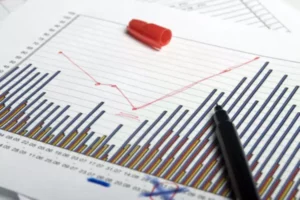Content

Depending on different accounting rules, depreciation on assets that begins in the middle of a fiscal year can be treated differently. One method is called partial year depreciation, where depreciation is calculated exactly at when assets start service. Simply select «Yes» as an input in order to use partial year depreciation when using the calculator.

In these situations, the declining balance method tends to be more accurate than the straight-line method at reflecting book value each year. On the other hand, this method is more complicated to calculate than straight line depreciation. Businesses must also consider that as the depreciation expenses of assets decline, their tax expenses will increase. To get a better grasp of double declining balance, spend a little time experimenting with this double declining balance calculator. It’s a good way to see the formula in action—and understand what kind of impact double declining depreciation might have on your finances.
Which Depreciation Method Should I Use?
This method is calculated by adding up the years in the useful life and using that sum to calculate a percentage of the remaining life of the asset. The percentage is then applied to the cost less salvage value, or https://www.bookstime.com/ depreciable base, to calculate depreciation expense for the period. Depreciation enables companies to generate revenue from their assets while only charging a fraction of the cost of the asset in use each year.
- Double-declining-balance method To apply the double-declining-balance (DDB) method of computing periodic depreciation charges you begin by calculating the straight-line depreciation rate.
- Below is the summary of all four depreciation methods from the examples above.
- In contrast to straight-line depreciation, DDB depreciation is highest in the first year and then decreases over subsequent years.
- We now have the necessary inputs to build our accelerated depreciation schedule.
However, one way of increasing depreciation deductions is by reclassifying property using a cost segregation study. To more clearly illustrate the different depreciation methods, the partial year of depreciation will not be taken into account in the examples below. To determine the actual depreciation rate for tax purposes, you should consult the MACRS table appropriate to the asset’s recovery period, depreciation method, and in-service date. An organization can choose different methods of depreciation for financial reporting purposes and for tax purposes. The IRS specifies the depreciation method and rate that must be used for tax purposes in a system called the modified accelerated cost recovery system (MACRS). The two methods used under MACRS are the straight line method and the declining balance method.
Units of Production Depreciation Method
The straight-line method depreciates an asset by an equal amount each accounting period. The declining balance method allocates a greater amount of depreciation in the earlier years of an asset’s life than in the later years. Units of production depreciates an asset based on a specific unit of output, such as miles driven per year for a vehicle. A cost segregation study identifies portions of a building that are currently being treated as nonresidential or residential real property, but should in fact be classified as 5-,7-, or 15-year property.
- While the straight-line method is the most common, there are also many cases where accelerated methods are preferable, or where the method should be tied to usage, such as units of production.
- Given the nature of the DDB depreciation method, it is best reserved for assets that depreciate rapidly in the first several years of ownership, such as cars and heavy equipment.
- However, the 20% is multiplied times the fixture’s book value at the beginning of the year instead of the fixture’s original cost.
- This is when that year’s depreciation is limited to the amount that will reduce the asset’s book value to its residual value.
- This is unlike the straight-line depreciation method, which spreads the cost evenly over the life of an asset.
Useful life refers to the time the company owning the asset intends to use it; useful life is not necessarily the same as either economic life or physical life. The economic life of a car may be 7 years and its physical life may be 10 years, but if a company has a policy of trading cars every 3 years, the useful life for depreciation purposes is 3 years. Various firms express useful life in years, months, working hours, or units of production. For example, a machine capable of producing units for 20 years, may be expected to be obsolete in 6 years. The building was destroyed because it had reached the end of its economic life.
Double Declining Balance Method
The four main depreciation methods mentioned above are explained in detail below. Under the generally accepted accounting principles (GAAP) for public companies, expenses are recorded in the same double declining balance method period as the revenue that is earned as a result of those expenses. Depreciation rates used in the declining balance method could be 150%, 200% (double), or 250% of the straight-line rate.
